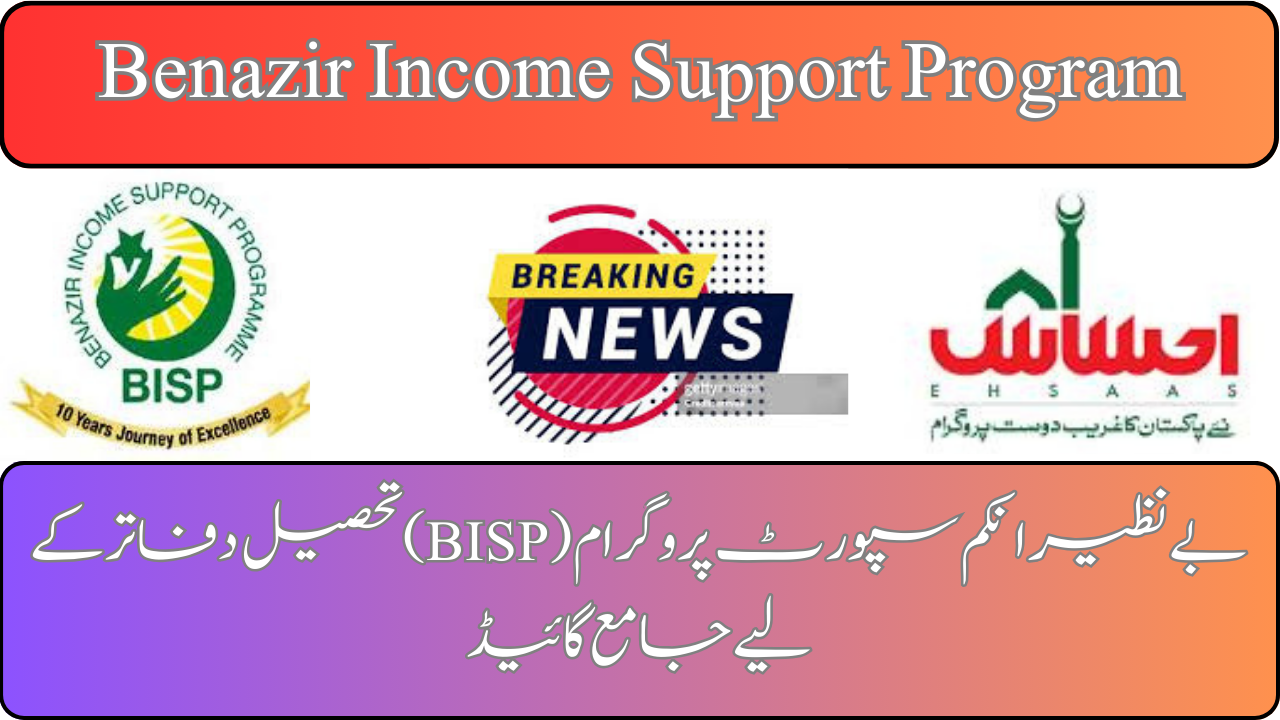Benazir Income Support Program (BISP) Tehsil Offices
The Benazir Income Support Program (BISP) is a significant social safety net initiative in Pakistan, aimed at providing financial assistance to the underprivileged segments of society. Established in July 2008, BISP has played a crucial role in alleviating poverty and empowering women. To facilitate its widespread implementation, BISP operates through Tehsil offices spread across the country. This guide provides a comprehensive overview of the BISP Tehsil offices, their functions, and how beneficiaries can interact with them.
Understanding BISP Tehsil Offices
BISP Tehsil offices serve as the local operational arms of the program. They are crucial in ensuring that the benefits of the program reach the grassroots level. These offices handle various tasks, including beneficiary registration, complaint resolution, and disbursement of funds. They act as the primary points of contact for beneficiaries seeking assistance or information regarding the program.
Functions of BISP Tehsil Offices
- Registration and Enrollment: One of the primary functions of BISP Tehsil offices is the registration of new beneficiaries. This involves collecting detailed information about applicants to determine their eligibility. The registration process is thorough to ensure that only the most deserving individuals receive support.
- Disbursement of Funds: BISP Tehsil offices are responsible for the disbursement of funds to eligible beneficiaries. These funds are typically provided on a quarterly basis and are crucial for the sustenance of many families. The offices ensure that payments are made promptly and securely.
- Complaint Resolution: Beneficiaries often face issues related to payments, eligibility, and registration. BISP Tehsil offices have dedicated staff to handle complaints and provide resolutions. This function is vital in maintaining the credibility and efficiency of the program.
- Awareness and Outreach: To ensure that the program reaches all eligible individuals, BISP Tehsil offices conduct awareness campaigns. These campaigns educate the public about the benefits of the program, the registration process, and the criteria for eligibility.
- Data Management: Accurate data management is essential for the smooth operation of BISP. Tehsil offices maintain comprehensive records of beneficiaries, including their personal information, payment history, and any changes in their circumstances. This data is crucial for monitoring and evaluating the program’s impact.
How to Access BISP Tehsil Offices
Beneficiaries and applicants can access BISP Tehsil offices in several ways:
- In-Person Visits: The most direct method is to visit the nearest BISP Tehsil office. Staff at these offices are trained to assist visitors with their queries and concerns. It is advisable to carry necessary identification documents and any relevant paperwork when visiting.
- Helpline Services: BISP has established helpline services to provide support to beneficiaries who cannot visit the Tehsil offices. The helpline staff can provide information on registration, payment status, and address complaints. This service is particularly useful for those living in remote areas.
- Online Services: With the advancement of technology, BISP has also introduced online services. Beneficiaries can check their payment status, update personal information, and register complaints through the BISP website. This online platform has made it easier for beneficiaries to access services without the need for physical visits.

Steps for Registering with BISP
The registration process for BISP involves several steps to ensure that the most deserving individuals are selected:
- Initial Survey: BISP conducts an initial survey to identify potential beneficiaries. This survey collects data on household income, family size, and other socio-economic indicators.
- Verification: The collected data is then verified through various means, including visits by BISP staff, cross-checking with other government databases, and community input.
- Enrollment: Once verified, eligible individuals are enrolled in the program. They receive a BISP card, which is used for the disbursement of funds.
- Disbursement of Funds: Enrolled beneficiaries receive financial assistance on a quarterly basis. The funds are typically disbursed through designated banks, post offices, or mobile banking services.
Challenges Faced by BISP Tehsil Offices
Despite their critical role, BISP Tehsil offices face several challenges:
- Resource Constraints: Many Tehsil offices operate with limited resources, including staff and infrastructure. This can impact their ability to serve beneficiaries efficiently.
- Geographical Barriers: In remote and rural areas, accessing BISP Tehsil offices can be challenging for beneficiaries. Poor road infrastructure and long distances can hinder their ability to visit the offices.
- Technological Limitations: While online services have improved access, not all beneficiaries have the necessary technological literacy or access to the internet. This digital divide can limit the reach of BISP services.
- Fraud and Mismanagement: Ensuring the integrity of the program is an ongoing challenge. Instances of fraud and mismanagement can undermine the credibility of BISP and affect the delivery of services.
Future Prospects and Improvements
To enhance the effectiveness of BISP Tehsil offices, several measures can be considered:
- Capacity Building: Investing in the training and development of Tehsil office staff can improve their ability to serve beneficiaries. Enhanced training programs can equip staff with the skills needed to handle complex cases and provide better support.
- Infrastructure Development: Improving the physical infrastructure of Tehsil offices, particularly in remote areas, can facilitate better service delivery. This includes providing adequate office space, equipment, and transportation facilities.
- Technological Integration: Expanding the use of technology in BISP operations can streamline processes and improve efficiency. This includes enhancing online services, using data analytics for better decision-making, and implementing robust monitoring systems to detect and prevent fraud.
- Community Engagement: Strengthening community engagement can help in identifying eligible beneficiaries and addressing their concerns. Collaborating with local leaders and organizations can enhance the reach and impact of BISP.

Conclusion
BISP Tehsil offices play a pivotal role in the successful implementation of the Benazir Income Support Program. By addressing the challenges and leveraging opportunities for improvement, these offices can continue to provide vital support to Pakistan’s most vulnerable populations.
